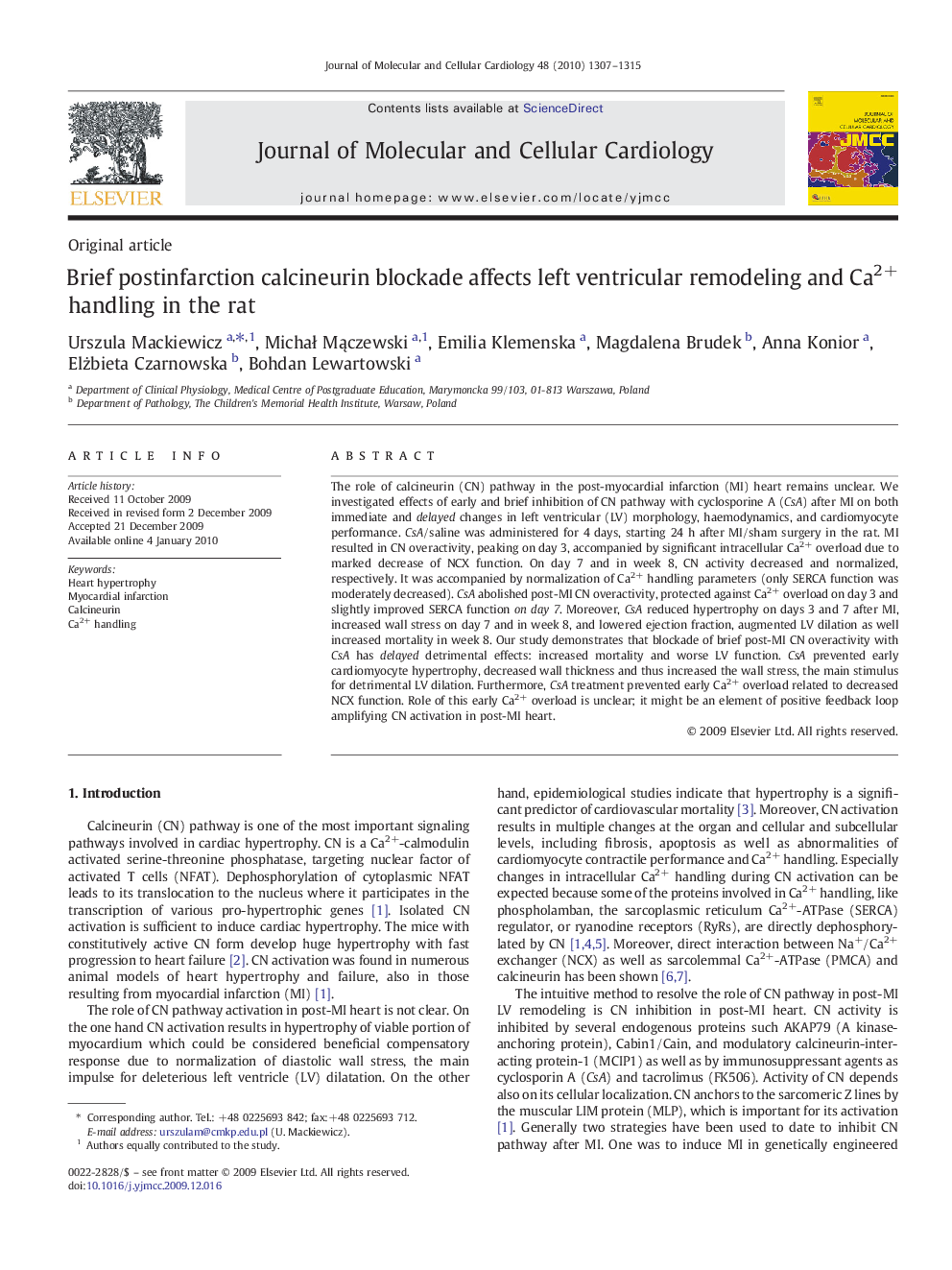| Article ID | Journal | Published Year | Pages | File Type |
|---|---|---|---|---|
| 10954200 | Journal of Molecular and Cellular Cardiology | 2010 | 9 Pages |
Abstract
The role of calcineurin (CN) pathway in the post-myocardial infarction (MI) heart remains unclear. We investigated effects of early and brief inhibition of CN pathway with cyclosporine A (CsA) after MI on both immediate and delayed changes in left ventricular (LV) morphology, haemodynamics, and cardiomyocyte performance. CsA/saline was administered for 4 days, starting 24 h after MI/sham surgery in the rat. MI resulted in CN overactivity, peaking on day 3, accompanied by significant intracellular Ca2+ overload due to marked decrease of NCX function. On day 7 and in week 8, CN activity decreased and normalized, respectively. It was accompanied by normalization of Ca2+ handling parameters (only SERCA function was moderately decreased). CsA abolished post-MI CN overactivity, protected against Ca2+ overload on day 3 and slightly improved SERCA function on day 7. Moreover, CsA reduced hypertrophy on days 3 and 7 after MI, increased wall stress on day 7 and in week 8, and lowered ejection fraction, augmented LV dilation as well increased mortality in week 8. Our study demonstrates that blockade of brief post-MI CN overactivity with CsA has delayed detrimental effects: increased mortality and worse LV function. CsA prevented early cardiomyocyte hypertrophy, decreased wall thickness and thus increased the wall stress, the main stimulus for detrimental LV dilation. Furthermore, CsA treatment prevented early Ca2+ overload related to decreased NCX function. Role of this early Ca2+ overload is unclear; it might be an element of positive feedback loop amplifying CN activation in post-MI heart.
Related Topics
Life Sciences
Biochemistry, Genetics and Molecular Biology
Cell Biology
Authors
Urszula Mackiewicz, MichaÅ MÄ
czewski, Emilia Klemenska, Magdalena Brudek, Anna Konior, Elżbieta Czarnowska, Bohdan Lewartowski,
